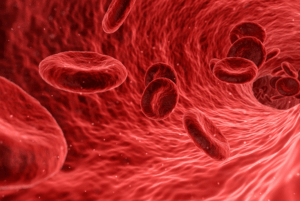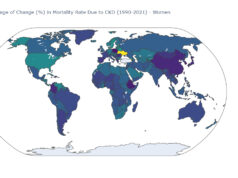 New research has been published in Hemodialysis International which, say its authors, “enhances understanding” of how haemodialysis centres can utilise oral roxadustat. The anaemia drug is licensed for use in the European Union (EU), the UK, and other markets, but has not been approved for use in chronic kidney disease (CKD) patients with anaemia by the US Food and Drug Administration (FDA). The results of the ASPEN trial, led by Steven Fishbane (Donald and Barbara Zucker School of Medicine at Hofstra/Northwell, Great Neck, USA), indicate that the drug can be used safely and effectively for maintaining haemoglobin levels in patients receiving haemodialysis.
New research has been published in Hemodialysis International which, say its authors, “enhances understanding” of how haemodialysis centres can utilise oral roxadustat. The anaemia drug is licensed for use in the European Union (EU), the UK, and other markets, but has not been approved for use in chronic kidney disease (CKD) patients with anaemia by the US Food and Drug Administration (FDA). The results of the ASPEN trial, led by Steven Fishbane (Donald and Barbara Zucker School of Medicine at Hofstra/Northwell, Great Neck, USA), indicate that the drug can be used safely and effectively for maintaining haemoglobin levels in patients receiving haemodialysis.
Anaemia occurs in 90% of patients with dialysis-dependent (DD)-CKD, state Fishbane et al, which they say exposes them to a heightened risk of all-cause and cardiovascular mortality, as well as of hospitalisation and CKD progression. They also note its impact on patients’ quality of life.
The study authors set out that it is “important” to assess the drug’s safety and efficacy in the real-world setting of haemodialysis organisations, as well as its “operational characteristics […] particularly given its oral mode of administration and dose titration algorithm”. The authors also point to a need for effective anaemia of CKD treatments that “can be administered in the home setting”.
Their assessment of the drug took the form of an open-label, single-arm study enrolling a total of 283 kidney failure patients on dialysis, 236 of whom completed a main 24-week course of treatment, while 216 continued into an extension period. There was also an initial six-week screening period, while follow-up was four weeks.
The authors identified two primary efficacy endpoints: the proportion of patients with mean haemoglobin (Hb) ≥10g/dL averaged over weeks 16–24 of treatment, as well as the mean Hb change from baseline to the average over weeks 16–24. Among several exploratory endpoints were the proportion of patients with mean Hb in a target range of 10.0–12.0g/dL, and the proportion of patients with Hb >12g/dL and >13g/dL at any time during the treatment period. Safety was measured according to the incidence of treatment-emergent adverse events (TEAEs) and treatment-emergent serious adverse events (TESAEs).
Fishbane and colleagues found an 83.7% proportion (95% confidence interval [CI] 78.9–88.6) of patients had mean Hb ≥10g/dL during weeks 16–24, compared with 78.7% at baseline. Subgroup analyses by sex, race, and other characteristics found subgroup results “consistent with the results for the overall population”. On the secondary endpoints, the proportion of patients with mean Hb within the 10.0–12.0g/dL target range during weeks 16–24 was 67.0% (95% CI 61.2–72.5), while the proportion of patients with >12.0g/dL was 47.9% (95% CI 41.9–53.9), and of patients with >13.0g/dL 12.4% (95% CI 8.8–16.8).
On safety, 180 (63.6%) patients reported TEAEs. Of these, 18 (6.4%) were considered either “related or possibly related to the study drug”. Reported TESAEs included gastrointestinal haemorrhage and respiratory failure, which occurred in four patients each. “Except for two patients who had markedly elevated bilirubin levels,” the authors detail, “potentially clinically significant laboratory abnormalities were consistent with the study population of patients with CKD”.
The greater number of patients who maintained Hb ≥10g/dL by weeks 16–24 than baseline “suggests that patients were successfully treated with roxadustat as demonstrated by maintaining Hb and treatment adherence”. Dose increases, which were mandated by the study protocol, were carried out by dialysis nursing staff, “further supporting the operational feasibility of oral roxadustat in an in-centre, community-based, haemodialysis clinic setting”.
Limitations are noted by the authors, including the fact that most enrolled patients were users of erythropoiesis-stimulating agents (ESAs), the existing standard of care for anaemia in CKD, as well as the single-arm, unblinded nature of the study, which “limits any direct comparisons between roxadustat and ESAs in this patient population”. Nevertheless, Fishbane et al conclude, their study demonstrates that roxadustat “effectively” treats anaemia in CKD patients “in large, community-based dialysis organisations”.











